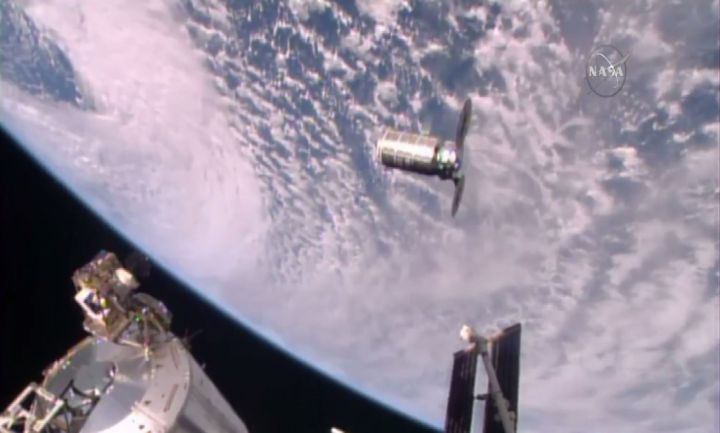
The Cygnus cargo spacecraft, developed by American aerospace manufacturer Orbital ATK Inc., was captured by the ISS’ robotic arm at 7:28 a.m. EDT (1128 GMT) today. The ship, named the S.S. Alan Poindexter in honor of the late NASA astronaut Alan Poindexter, carried materials for science experiments and other supplies for the crew.
The spacecraft was developed by Orbital ATK as part of NASA’s Commercial Orbital Transportation Services program, and is automated while flying. After the station’s robotic arm captured the ship, it was attached to an open berthing port later this morning, according to Space.com.
Approaching the @Space_Station, @OrbitalATK's #Cygnus cargo spacecraft set to be captured at 7:25am ET. Watch live: https://t.co/3PpS8ezSaF pic.twitter.com/gA9npqwAYF
— NASA (@NASA) October 23, 2016
“Cygnus spacecraft are not designed to independently dock with the station. Instead, astronauts and ground crew must use the station’s robotic arm to grab the spacecraft and berth it with the station,” Space.com’s report explained.
According to the site, Takuya Onishi, a Japanese astronaut, used the Canadarm2, which is 57.7 feet long, to grab Cygnus, while Kate Rubins, an American astronaut at the International Space Station, backed Onishi up. For the crew to be able to access the materials in the ship, flight controllers at Mission Control in Houston later controlled the arm remotely to install the ship where it will remain for one month, Space.com said.
This ship had launched on Oct. 17, making nearly a one-week journey to the International Space Station originating in Virginia. It also marks the second ship to land at the station in the past week, as a Russian Soyuz spacecraft left the Baikonur Cosmodrome in Kazakhstan on Oct. 20 and arrived at ISS on Oct. 21.
Editors' Recommendations
- NASA’s record-breaking astronaut arrives home safely
- Chocolate mousse in space is more important than you think
- Watch SpaceX’s Crew Dragon thrusters guide it to space station
- SpaceX Crew-4 astronauts are on their way to the space station
- How to watch SpaceX Crew-4 astronauts launch to ISS


